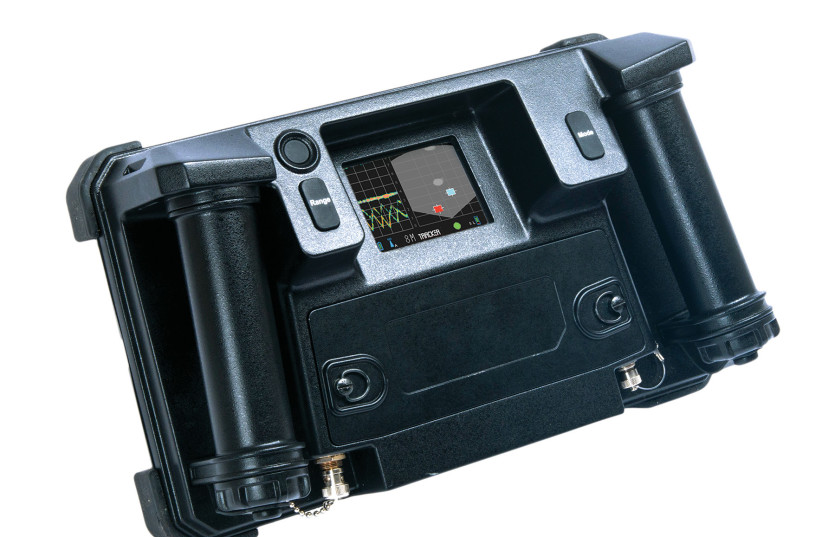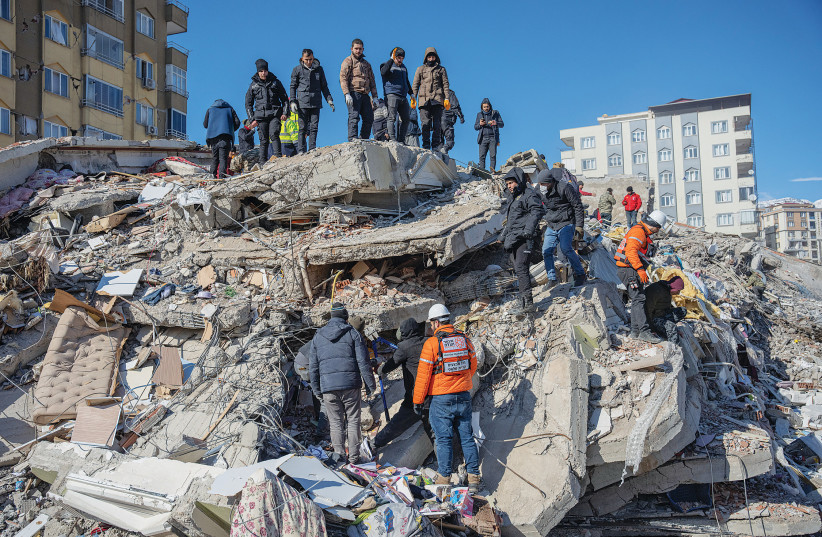Radar that lets rescuers see through walls was used by the IDF Home Front Command Search and Rescue Brigade to help locate survivors of last week’s earthquakes in Turkey.
At least 40,000 people were reported killed after massive quakes struck Turkey, causing thousands of deaths in Syria as well. A large Israeli delegation helped in search-and-rescue efforts.
Micro-power radar helped locate survivors
Camero-Tech, a member of the SK Group, supplied its Xaver 400 and 100 systems to the search-and-rescue expedition, the company said.
“With the help of these systems, the IDF Home Front Command SAR Unit expedition has been able to locate survivors and rescue people who have been trapped in the ruins for days.”
“With the help of these systems, the IDF Home Front Command SAR Unit expedition has been able to locate survivors and rescue people who have been trapped in the ruins for days.”
Camero-Tech
The company describes itself as a “pioneer and world leader in the design and manufacture of pulse-based UWB [ultra-wide band] micro-power radar ‘Through Wall Imaging’ systems.”

Camero-Tech founder and CEO Amir Beeri spoke about using the technology to assist in Turkey.
“As our hearts go out to all those who have been affected by this tragic event, we are proud that we have been able to assist the rescue efforts, using Camero systems to successfully save lives,” said Beeri.
The system was sent to Turkey where it was used to help rescue a woman in her 30s. This type of technology was also used to locate and rescue survivors of the 2017 earthquake in Mexico, where the company sold some 20 systems in 2012.
The unique radar can be used alongside other search-and-rescue technologies and systems. Rescue teams use dogs to search and microphones to listen for survivors. Specialized scopes can also be sent down into rubble.
However, each method has limitations. Dogs need to be able to smell, and they become exhausted; microphones need quiet, which might not be possible when there is equipment or vehicles being moved around; and scopes may not be able to penetrate deep into layers of rubble.
Beeri explained, “The only way to penetrate directly is radio waves, imaging radar, and what it can provide with the Xaver 400 is not only detection of life, we can also see the layers so they can plan how to access a victim. This is important because once you find someone, you have to find how to reach them and [figure out] the easiest way to get to them and take them out, and time is critical.”
The Xaver 400 weighs 3.2 kg. It is about the size of a laptop and is easy to transport, while the Xaver 100 is even smaller and can fit in the palm of a hand. Both are tactical radars.
Beeri described how the systems are part of a kit with accessories such as a wireless platform that can monitor multiple systems if necessary. This means that operators can also use the smaller system to go into hard-to-reach places. The kit for search-and-rescue teams is designed to fit in a backpack that is colored orange so it can be easily seen.
How does it work?
Radar works by transmitting radio waves at wide bandwidth with low frequency. The waves pass through rubble and what might have been the wall of a former apartment, for example, allowing the operator to see what is inside.
Algorithms process data in the Camero-Tech system, making it easier for rescue teams to determine what is being seen. Other, larger systems from the same company can be used at longer ranges, up to 100 meters (around 330 feet). This can be useful if a building is on fire or if it is too dangerous to go into an area.
These smaller radar systems can also be deployed with drones and can communicate with wireless technologies, so they could be deployed into a dangerous structure and give feedback to the rescue team.
The challenge after a collapse is, first, understanding what kind of rubble needs to be searched through and where survivors might be. For instance, if the floors of a building collapse onto the ones below it, without pockets of survivable areas like reinforced rooms, the likelihood of finding survivors is rare.

However, if a building partially collapses, there is a greater chance that people might be trapped somewhere below the rubble.
“There are various methods,” said Beeri. “When a building collapses, you want to peel the rubble layer by layer carefully, and another is tunneling. But when you peel, you make sure no one is below and you go down to the people. Another is tunneling below.”
There is also the element of time, and using technology like radar can aid in rescue efforts. While a few people were saved more than 200 hours after the earthquakes hit Turkey, the hope for life generally fades after 72 hours because the lack of water severely lowers the chance for survival.
Beeri said that his company received positive feedback from the use of its radars in Turkey. This means that other search-and-rescue groups will likely be interested in the technology.
Camero-Tech’s radars have until now been used more in security, law enforcement and defense applications. They differ from some ground-penetrating radars that utilize lower frequencies.
“We designed this system in higher frequencies to suit building materials, not ground. In earthquakes, when buildings collapse, this is what is needed,” Beeri said.
This type of technology can also aid rescue efforts when buildings collapse for reasons other than earthquakes. Beeri noted that this system is uniquely designed for use with buildings and an algorithm that reconstructs an image of what the radar sees, so the user can understand what is happening in the image. It is also easy to operate and quickly unpacked from a bag, he said.
Camero-Tech was founded in 2004 as part of the SK Group founded by Samy Katsav. It is a privately held technology-and-innovation holding company specializing in global frontline defense, law-enforcement solutions, marine infrastructure and property-development solutions. SK Group says it draws “on Israel’s innovation and field-proven solutions.”
